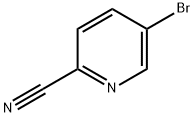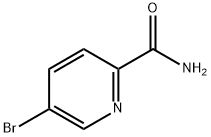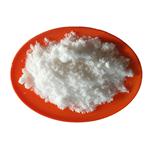Uses
5-Bromo-2-pyridinecarbonitrile can be used in the synthesis of aza-terphenyl diamidine analogs, which exhibits potent antiprotozoal activity. It can also be used in the synthesis of pyridine-diketopyrrolopyrrole(PyDPP), a building block for preparing low band-gap copolymers for use as electron donor in polymer solar cells.
Chemical Properties
The intramolecular hyperconjugative interactions of the p to p* transitions from (C1—C2, C3—C4. C5—N6) p bonds in pyridine ring lead to strong delocalization. In particular, there is a little deviation in the energetic contributions from p (C1—C2 and C3—C4) bonds to p* [(C3—C4, C5—N6) and (C1—C2, C5—N6)] antibond transitions of (22.96, 17.04 kJ mol1 ) and (18.04, 24.81 kJ mol1 ), respectively, compared to other contributions in the ring. As well as the hyperconjugative interactions of the s / s* transitions occur from various bonds in our molecule; particularly, σ (C1—C11) and (C11—N12) having the bigger energetic contribution of their antibonding σ* (C11—N12) and (C1—C11) interactions at 8.28 and 8.68 kJ mol1 , respectively[1]. The most interaction energy, related to the resonance in the molecule, electron donating from the LP(2) N12 to the antibonding σ* (C1—C11) leads to moderate stabilization energy of 11.95 kJ mol1 is shown below.

References
[1] Kandasamy, M. , and G. Velraj . "Ab initio/DFT electronic structure calculations, spectroscopic studies of 5-bromo-2-pyridinecarbonitrile – A comparative study." Solid State Sciences 14.8(2012):1071-1079.







